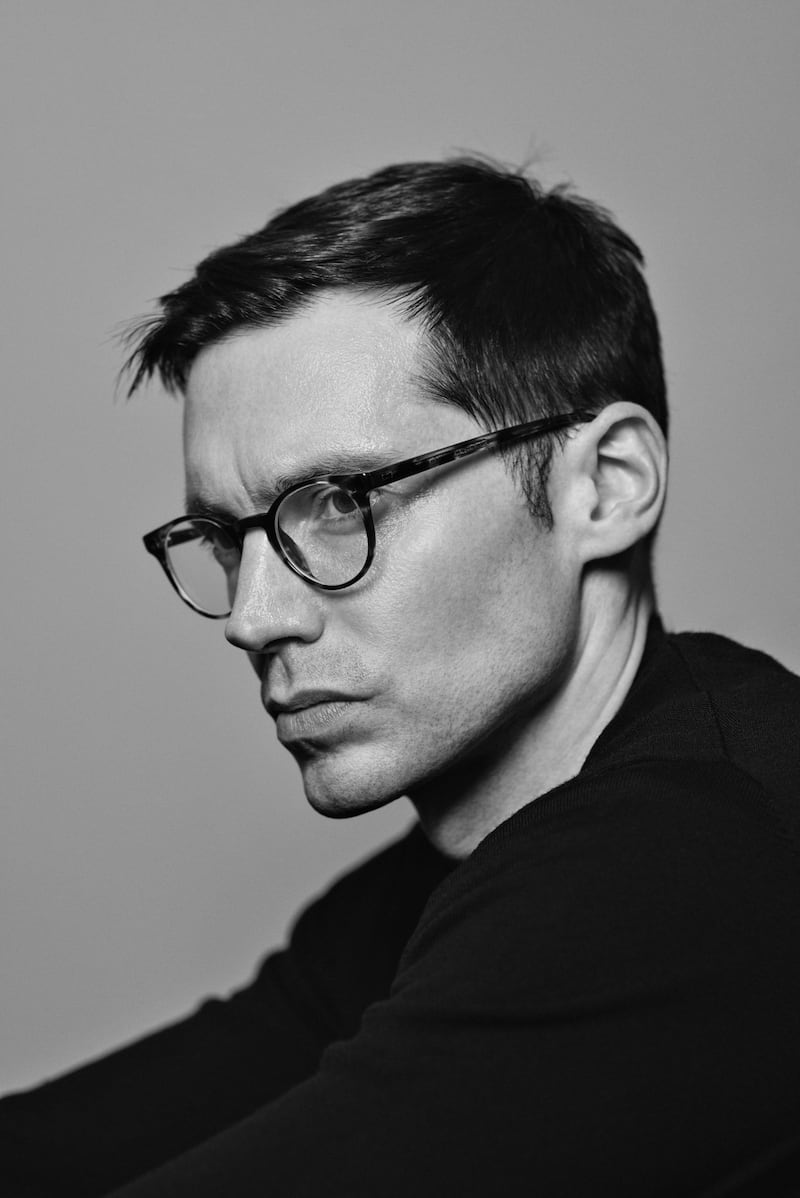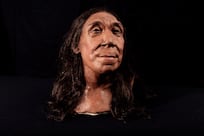Behind every expression of creativity that emerges from Erdem Moralioglu’s sketchbook is a beautiful and powerful narrative. The fashion designer, who launched the brand in 2005, understands the value of storytelling for bringing his fashion collections to life.
In February 2018, he presented a collection at London’s National Portrait Gallery, inspired by an imagined meeting between his two great-grandmothers in the early 20th century – one was from northern England and the other from eastern Turkey. Distant family members from different worlds improbably meeting on a catwalk for the first time. Erdem’s autumn/winter 2018 collection featured an array of lush brocade ottoman coats, silk velvet tea dresses richly printed with Turkish florals, miniature paintings and Turkish jewellery intermingling with British camel coats, guipure lace and Aran knits.
“It was an unspoken dialogue between two different cultures,” recalls the designer during our video conversation. His studio desk and the surrounding shelves are piled high with books that are a reference for many of his historical and cinematic ideas. “Turkey has always been hugely influential – you could argue my love of textiles, my love of colour is rooted in something outside my UK training,” he says. “I’ve always felt my love of colour is something to do with my upbringing.”
That collection was Moralioglu’s way of connecting with his long-lost heritage. He had an English mother and a Turkish father, a chemical engineer who, after the birth of his children (the designer and his twin sister Sara), moved the family to Montreal, Canada, where they grew up. He returned to London to study at Central Saint Martins and the Royal College of Art, but his father died before he graduated, and his mother soon after he launched his fashion label.
As a child, he frequently visited family in London and Turkey. “My father was from Antakya, in eastern Turkey near the Syrian border, that sadly was badly damaged during the earthquake earlier this year. It was completely flattened, but thankfully all my family are fine,” he says.
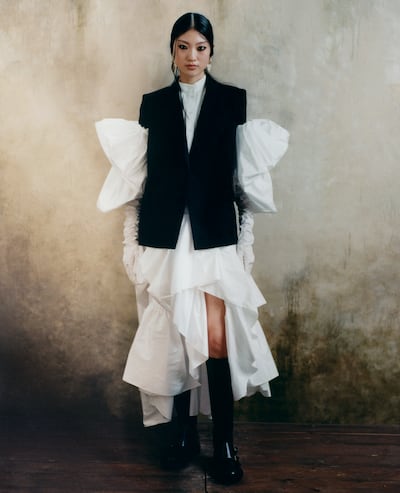
The art of storytelling was impressed on him by the late designer Alber Elbaz when he was a visiting tutor at the RCA. “He gave us an exercise to design for this woman, a character, and that really stuck with me as a method or an approach, as I’ve always been fascinated by narrative and the idea of telling a story through clothing,” explains Moralioglu, who to this day channels history, literature, cinema and art into his work. “I’ve always been fascinated to learn. Before I studied fashion, I studied the classics back in Canada: literature, philosophy and ancient civilisation.”
His new autumn/winter collection, however, took inspiration from a source somewhat closer to home, his townhouse in Bloomsbury, London, and the discoveries made during a major refurbishment.
Peeling back the layers, he found evidence of the house’s previous residents – old wallpaper, drawings, a spy hatch to watch the residents and creaking floorboards that suggested the place was a Victorian Home of Hope, a shelter for women in need in the 19th century. This conjured up designs of a deflated Victorian silhouette, crumpled silk dresses, or white cotton pieces with black tailoring and a sense of disarray. He envisioned dark moody floral prints worn with jet-beaded chokers and incongruously large taffeta opera gloves. The look is darkly romantic, and as the designer suggests, there is “something quite haunted” about it.
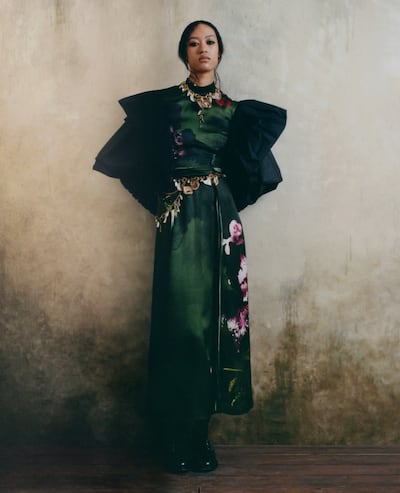
Throughout his collections, his emphasis has always largely been on dresses. “I always start a collection thinking about the dress, and that probably has a lot to do with the story. There was a collection about Adele Astaire [Fred Astaire’s sister, who married the son of the Duke of Devonshire in 1932] that was all about tweedy, nubbly wools and star-spangled capes treading the moors, and so it depends,” he says, reflecting on the autumn/winter 2018 collection. “I’m fascinated by dressmaking, but equally I enjoy tailoring and knitwear.”
His interest in the past goes back to his late mother. “She was captivated by history and would read to us about the Wars of the Roses and other historical events and take us to museums – she was full of curiosity,” he recalls. His love of floral prints is similarly inherited from his mother, who was a very keen gardener, although, it is not a skill he inherited. Unlike many of his peers, Moralioglu’s business has always remained independent. This is why it took him 10 years to open his first boutique, something he did without a loan or outside investment. He has since expanded with a white collection (adaptable to the bridal market) and a menswear offering. Bespoke is now a large part of his business, with many clients in the Middle East and commissions encompassing daywear, tailoring and eveningwear, all made to measure.
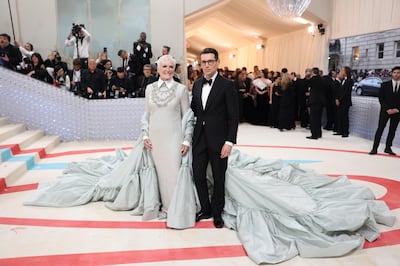
He is a red-carpet go-to for actors including Glenn Close, Jessica Chastain, Laura Bailey and Freida Pinto, as well as model Ikram Abdi, Somali boxer and activist Ramla Ali and singer Harry Styles, to name a few of his high-profile clients. Close was his date for the Met Gala this year; the Hollywood actress wore a custom-made pale shimmering dress with white cuffs and collar, paired with a spectacular pale grey taffeta opera coat. “She was an amazing date, and she wore it well,” he recalls of the night.
He also designed costumes for the Royal Ballet’s production, Corybantic Games, by celebrated choreographer Christopher Wheeldon in 2018. Revived this summer, it is set to music by Leonard Bernstein with dancers wearing nude-coloured leotards and pleated skirts criss-crossed with long black ribbons to highlight movement. Being an independent designer at a time when French luxury empires are snapping up smaller brands is not without its challenges. In the spring, one of his Central Saint Martins contemporaries, Christopher Kane, shuttered his business to concentrate on his fine art. “Independence is the only thing I’ve known, but when something like Covid happened, you suddenly become acutely aware of being independent and that there is no net there to catch you,” he says. “It was a scary time, but gave us time to reset and look at how we do things and figure out how to do them better.” He is also proud of the fact that the brand managed to keep its entire workforce of 90 people. He seems to be blessed with a head for business, as well as being a successful and enthralling creator. “I think people might think I have a good head for business because I wear glasses,” he jokes. “Ultimately, I am a curious person, and if I don’t know the answer to something, and often I don’t, then I am always intrigued by those that do.”
He also wants to know how his business is going to grow and how to go about that independently. “There are different paths and who knows what’s in the future, but at the moment, I think there is an international path that’s not been explored,” he says. “I think we’ve been very fortunate to grow at our own pace, and done it well, which I’m very proud of.”
